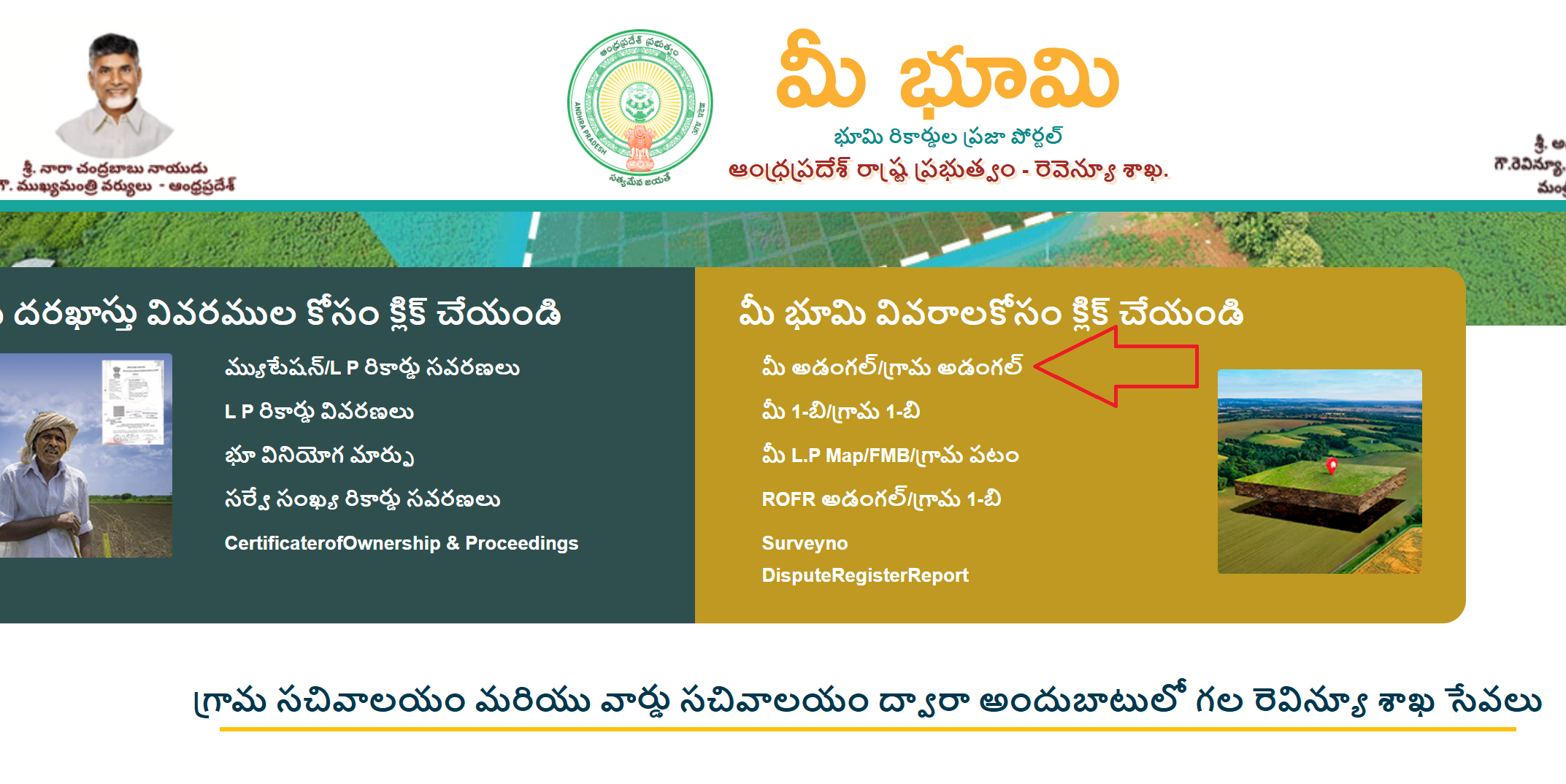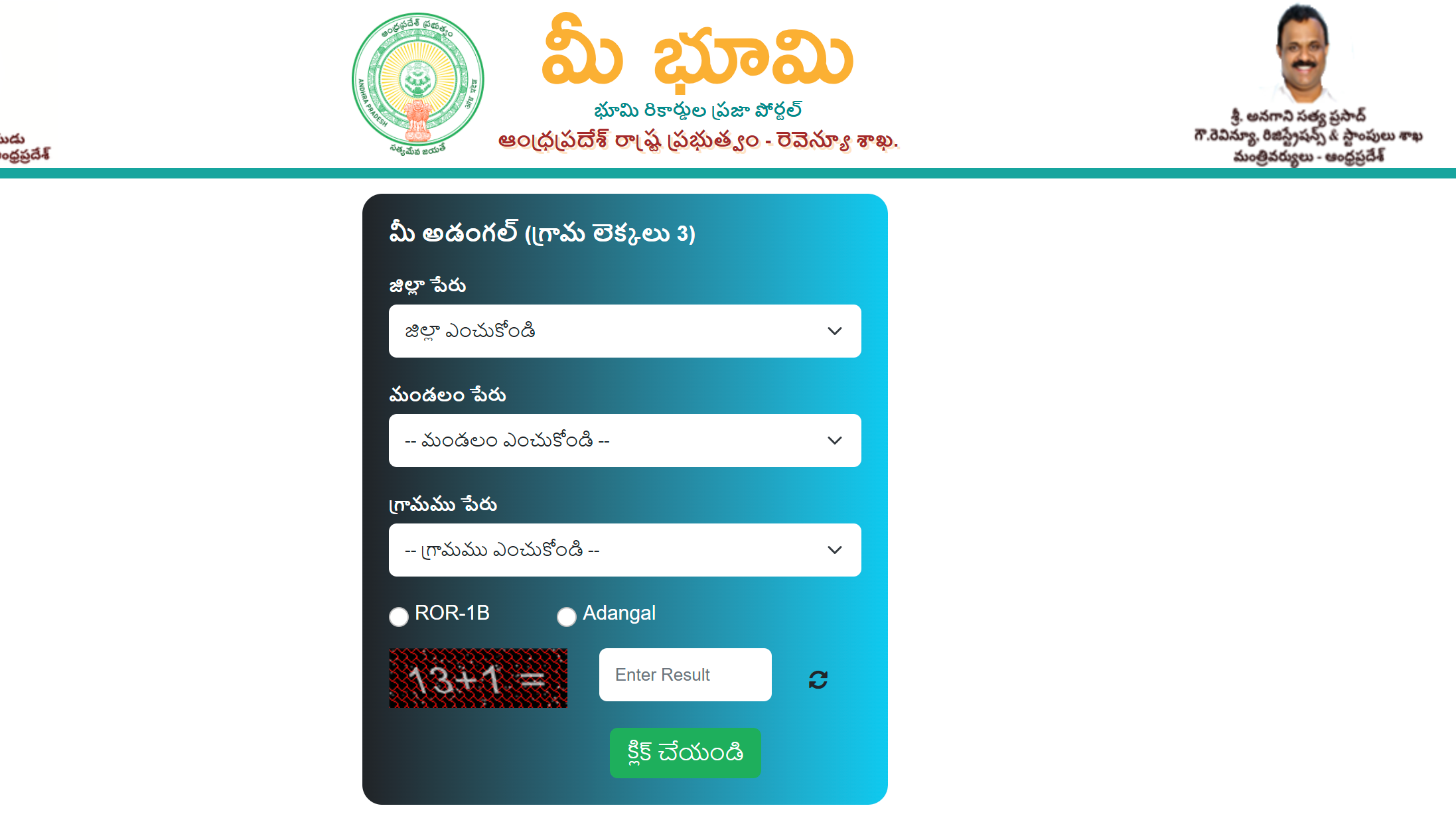The Meebhoomi portal, launched by the Andhra Pradesh Revenue Department in June 2015, is a digital platform that provides transparent access to land records.
Among its key offerings is the Adangal, a vital document that records detailed agricultural and land-related information for a specific plot. Maintained by the Village Revenue Officer (VRO), the Adangal is essential for farmers, landowners, and officials for agricultural planning, loan applications, and legal purposes.
What is the Meebhoomi AP Adangal?
The Adangal, also known as the Pahani, is a comprehensive record that captures agricultural and land details for a specific survey number or landowner. It includes:
- Landowner Details: Name of the pattadar and ownership status.
- Land Information: Survey number, khata number, land area, and type (wet/dry).
- Agricultural Data: Crop types, cultivation seasons, and irrigation sources (e.g., canal, borewell).
- Soil Type: Classification (e.g., red soil, black cotton soil).
- Tax and Revenue Details: Land revenue payments and dues.
- Remarks: Notes on disputes, encroachments, or government land status.
The Adangal is crucial for:
- Applying for crop loans or agricultural subsidies.
- Verifying land use for government schemes like PM-KISAN.
- Resolving disputes related to cultivation or land classification.
- Supporting legal processes in ownership or boundary disputes.
Step-by-Step Guide to Accessing Meebhoomi AP Adangal Records
Follow these steps to retrieve Adangal records on the Meebhoomi portal:
- Open a web browser and navigate to meebhoomi.ap.gov.in.
- On the homepage, find the section labeled “మీ భూమి వివరాల కోసం క్లిక్ చేయండి” (Click for Land Details).
- Click on “మీ అడంగల్/గ్రామ అడంగల్” (Your Adangal/Village Adangal).

- Choose your District, Mandal, and Village from the dropdown menus.

- Select one of the following options to access Adangal records:
- Survey Number: Specific to a land parcel (e.g., “123/4A”).
- Account Number: Unique to the landowner (e.g., “9876543210123”).
- Aadhaar Number: If linked to the land record.
- Pattadar Name: Landowner’s name (less reliable due to duplicates).
- Village Adangal: To view all Adangal records for the village.
- Input the chosen search criterion (e.g., Survey Number “123/4A” or Account Number “9876543210123”).
- Double-check for accuracy, as a single error will yield no results.
- For Village Adangal, no additional input is needed beyond location, but it may return extensive data requiring manual filtering.
- Tip: If details are unavailable, visit the Tehsildar or VRO office with your Aadhaar and land documents to obtain them.
- Click “క్లిక్ చేయండి” (Click) or “Submit.”
- The Adangal record will display, showing:
- Landowner’s name and father’s name.
- Survey number, khata number, and land extent.
- Crop details (e.g., paddy, sugarcane) and irrigation source.
- Soil type and land classification.
- Revenue payment status and remarks (e.g., disputes).
Practical Applications of Adangal Records
- Agricultural Loans: Banks accept Adangal to verify cultivation for crop loans.
- Government Schemes: Required for PM-KISAN, crop insurance, or fertilizer subsidies.
- Land Disputes: Provides evidence for cultivation or land use disputes.
- Property Transactions: Supports ownership verification when paired with 1B records.
- Record Corrections: Identifies errors (e.g., wrong crop data) for rectification via Webland.
Additional Meebhoomi Services
Beyond Adangal, the portal offers:
- 1B Records: Ownership and mutation details.
- E-Passbook: Consolidated land holding summary.
- Field Measurement Book (FMB): Boundary maps and measurements.
- Village Maps: Visual layouts of land parcels.
- Aadhaar Linking: Enhances security for record access.
- Dispute Status: Tracks land-related grievances or court cases.